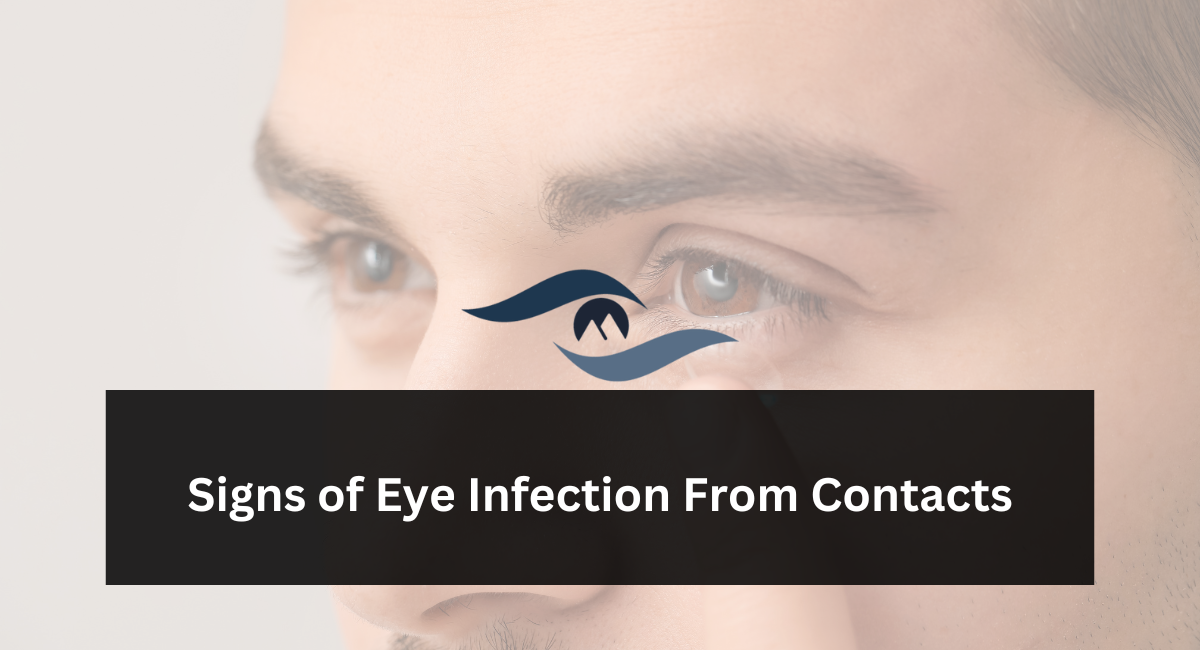Using contact lenses can be a practical method to improve eyesight without wearing glasses. However, occasionally our eyes may become infected if we fail to properly care for our lenses.
It’s important to be aware of the indications of an eye infection so you can respond promptly.
In this blog post, we will talk about some typical indications of eye infection caused by contact lenses using straightforward language to assist you in maintaining your safety and well-being.
Redness and irritation:
One of the initial indications that there may be an issue with your eyes is the presence of redness and irritation. If your eyes begin to feel irritated, scratchy, or as if there is something lodged in them, it may indicate an infection.
Take note of any alterations in the appearance and sensation of your eyes, particularly if they occur shortly after inserting your contact lenses.
Pain and Discomfort:
Another indication of an eye infection is experiencing pain and discomfort. If your eyes are painful, tender, or experiencing discomfort, it’s important to pay attention.
Discomfort can serve as an indication that there may be an issue, and it’s important to pay attention to it. Even if the discomfort is slight, it’s advisable to be cautious and consult with an eye care specialist.
Excessive Tearing or Discharge:
If you observe that your eyes are producing more tears than usual or if there is any abnormal discharge, it could indicate an infection.
Excessive weeping or discharge may suggest that your eyes are attempting to remove bacteria or other hazardous items. If you notice any pus or thick, yellowish discharge, it’s important to swiftly seek medical assistance.
Light Sensitivity:
Another typical indication of an eye infection is light sensitivity, commonly referred to as photophobia. If you notice that you are narrowing your eyes or trying to avoid strong lights, it can indicate that your eyes are diseased.
Light sensitivity might make it difficult to carry out your everyday tasks, so it’s important to deal with it quickly.
Blurred Vision:
Blurred vision is another sign that can suggest an eye infection. If your eyesight gets unclear or hazy, particularly when wearing your contact lenses, it is important to take steps.
Unclear eyesight can hinder your vision and affect your capacity to drive, work, or carry out other jobs securely.
Swelling or inflammation:
Swelling or inflammation around the eyes might potentially indicate an infection. If you observe that your eyelids are enlarged, swollen, or reddened, it is important to be attentive.
Swelling and inflammation may suggest that your eyes are battling an infection and require immediate attention.
Feeling of a Foreign Object:
If you get the sensation that there is something lodged in your eye, even after taking out your contact lenses, it may indicate an infection.
A painful feeling in the eye may suggest the presence of an irritant, such as bacteria or dirt.
Elevated Eye Sensitivity:
You may observe that your eyes are more responsive than usual, particularly when wearing your contact lenses.
Heightened sensitivity can result in discomfort or agony while using contact lenses, or even when exposed to typical ambient conditions like wind or air conditioning.
Be aware of any alterations in your eye sensitivity and consult a medical professional if you experience any unexpected discomfort.
Continuous Itching:
Although occasional itching can be considered normal, continuous itching, particularly around the eyes, may indicate an underlying problem. Eye itching can occur due to irritation or inflammation of the surface, generally caused by an infection.
If you often find yourself rubbing or scratching your eyes, it’s important to seek advice from an eye care specialist to eliminate the possibility of any infections.
Alterations in Contact Lens Tolerance:
If you have been using contact lenses for a period of time and suddenly encounter discomfort or struggle to tolerate them, it may indicate an eye infection.
Alterations in lens tolerance can happen because of many circumstances, such as modifications in the surface of the eye or the existence of foreign objects.
If you observe any alterations in how your eyes react to contact lenses, it is important to deal with them swiftly to avoid additional difficulties.
Eye Discomfort During Lens Wear:
Feeling uncomfortable when using your contact lenses, such as experiencing dryness, a gritty sensation, or a burning feeling, may suggest an underlying problem.
These symptoms might be more noticeable while wearing contact lenses and can get worse over time if not treated.
If you regularly feel uncomfortable when wearing your contacts, it’s important to seek advice from an eye care specialist to identify the cause and find the right therapy.
Uncommon Eye Secretions:
Alterations in the texture or hue of eye secretions, such as heightened mucus or discharge, may indicate an eye infection. Abnormal discharges may suggest the existence of bacteria, viruses, or other harmful microorganisms that can lead to illness.
If you observe any alterations in your eye secretions, particularly if they are accompanied by other symptoms, it is important to swiftly seek medical assistance.
Conclusion
Knowing the indications of an eye infection caused by contact lenses is important for keeping your eyes healthy and avoiding consequences.
If you have any of the symptoms indicated before, it is important to take out your contacts right away and get advice from an eye care specialist.
Timely identification and immediate medical care are crucial in minimizing additional harm and promoting a quick recuperation. Always remember to practice good cleanliness when handling your contact lenses and make your eye health a top priority.
Your eyes are valuable, so pay attention to your body and seek assistance if you think you have an infection.
